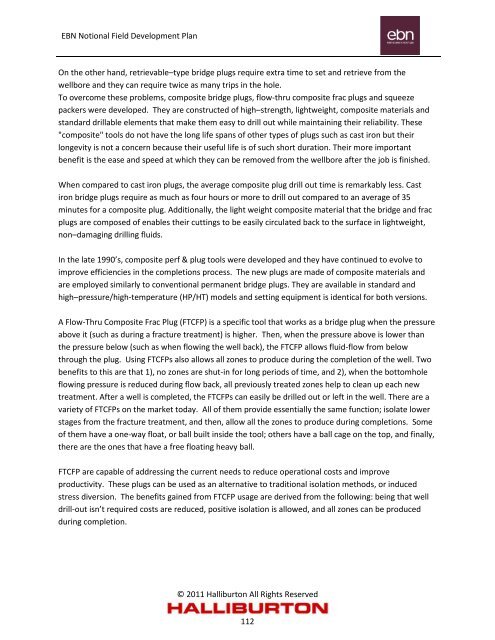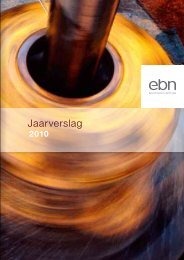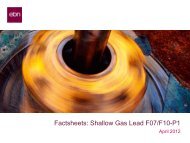Notional Field Development Final Report - EBN
Notional Field Development Final Report - EBN
Notional Field Development Final Report - EBN
Create successful ePaper yourself
Turn your PDF publications into a flip-book with our unique Google optimized e-Paper software.
<strong>EBN</strong> <strong>Notional</strong> <strong>Field</strong> <strong>Development</strong> Plan<br />
On the other hand, retrievable–type bridge plugs require extra time to set and retrieve from the<br />
wellbore and they can require twice as many trips in the hole.<br />
To overcome these problems, composite bridge plugs, flow-thru composite frac plugs and squeeze<br />
packers were developed. They are constructed of high–strength, lightweight, composite materials and<br />
standard drillable elements that make them easy to drill out while maintaining their reliability. These<br />
"composite" tools do not have the long life spans of other types of plugs such as cast iron but their<br />
longevity is not a concern because their useful life is of such short duration. Their more important<br />
benefit is the ease and speed at which they can be removed from the wellbore after the job is finished.<br />
When compared to cast iron plugs, the average composite plug drill out time is remarkably less. Cast<br />
iron bridge plugs require as much as four hours or more to drill out compared to an average of 35<br />
minutes for a composite plug. Additionally, the light weight composite material that the bridge and frac<br />
plugs are composed of enables their cuttings to be easily circulated back to the surface in lightweight,<br />
non–damaging drilling fluids.<br />
In the late 1990’s, composite perf & plug tools were developed and they have continued to evolve to<br />
improve efficiencies in the completions process. The new plugs are made of composite materials and<br />
are employed similarly to conventional permanent bridge plugs. They are available in standard and<br />
high–pressure/high-temperature (HP/HT) models and setting equipment is identical for both versions.<br />
A Flow-Thru Composite Frac Plug (FTCFP) is a specific tool that works as a bridge plug when the pressure<br />
above it (such as during a fracture treatment) is higher. Then, when the pressure above is lower than<br />
the pressure below (such as when flowing the well back), the FTCFP allows fluid-flow from below<br />
through the plug. Using FTCFPs also allows all zones to produce during the completion of the well. Two<br />
benefits to this are that 1), no zones are shut-in for long periods of time, and 2), when the bottomhole<br />
flowing pressure is reduced during flow back, all previously treated zones help to clean up each new<br />
treatment. After a well is completed, the FTCFPs can easily be drilled out or left in the well. There are a<br />
variety of FTCFPs on the market today. All of them provide essentially the same function; isolate lower<br />
stages from the fracture treatment, and then, allow all the zones to produce during completions. Some<br />
of them have a one-way float, or ball built inside the tool; others have a ball cage on the top, and finally,<br />
there are the ones that have a free floating heavy ball.<br />
FTCFP are capable of addressing the current needs to reduce operational costs and improve<br />
productivity. These plugs can be used as an alternative to traditional isolation methods, or induced<br />
stress diversion. The benefits gained from FTCFP usage are derived from the following: being that well<br />
drill-out isn’t required costs are reduced, positive isolation is allowed, and all zones can be produced<br />
during completion.<br />
© 2011 Halliburton All Rights Reserved<br />
112







